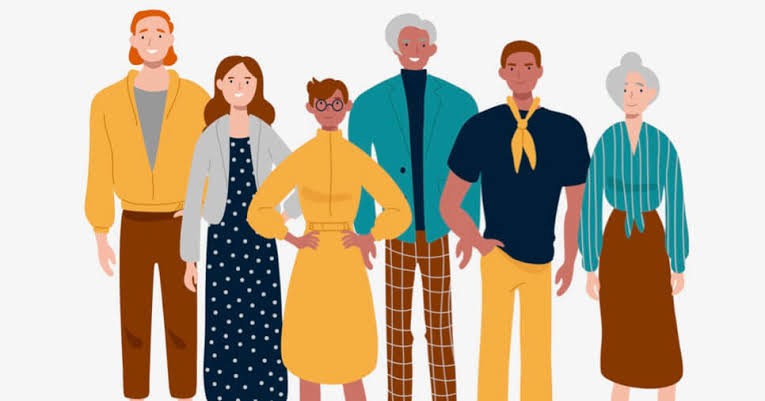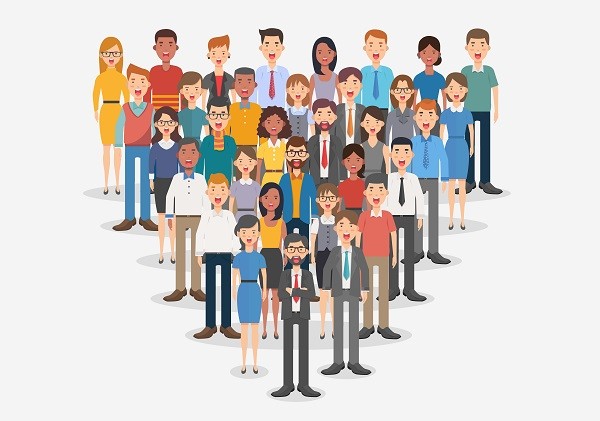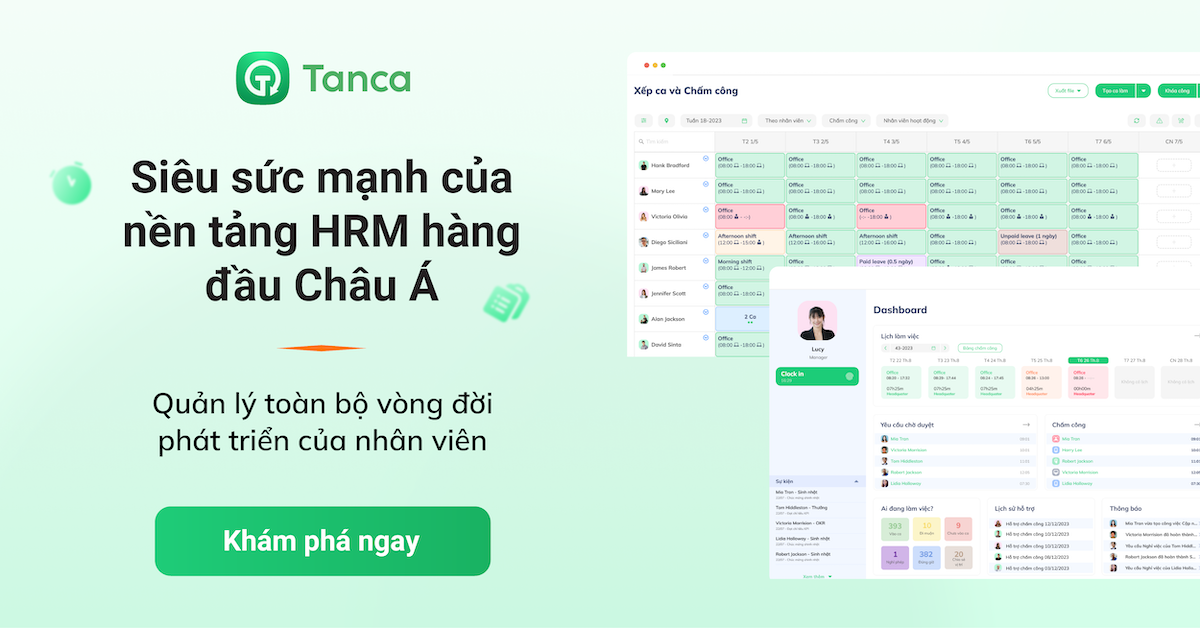Managing a multigenerational workforce involves managing a team of workers from several generations. The work habits, objectives, and communication styles of each individual vary.
Therefore, management must have a thorough understanding of each generation to develop an effective management strategy. Take a look at 9 tips for Managing A Multigenerational Workforce now.
What is a multigenerational workforce?

Employees from different generations, such as the baby boomer generation, Generation X, the millennial generation, and Generation Z, make up a multigenerational workforce.
It may be possible for organizations to work with teams of four to six distinct generations at once in the future, which is why it's critical to start learning how to manage a multigenerational workforce now.
Read more: How To Strategically Downsize Your Business?
Workplace Generational Differences
Certain attributes and behaviors, according to some experts, are a direct result of big global events that occurred during a generation's formative years.
Others maintain that the distinctions between generations are not related to any one generation and are instead the result of how people change as they move through different phases of life.
No matter what, a 60-year-old employee is undoubtedly going to have different objectives, worries, values, beliefs, and attributes than their 25-year-old teammate. Your ability to lead and manage a multigenerational staff will improve if you are aware of these distinctions.
Generation 'B' - Baby Boomer (1946-1964)
According to Gallup, the baby boomer generation made up about a third of the American workforce as of 2013. However, that number will decrease in the upcoming years.
Not every baby boomer, though, plans to retire at the customary age of 65. Due to their low retirement savings and insufficient Social Security payments, many baby boomers struggle to maintain a comfortable standard of living in their old age.
The majority of baby boomers who are still in the workforce say they won't retire until they are over 65, and 10% believe they may never do so.
Given that baby boomers tend to stay at the same employment for an average of 15 years, many firms might anticipate that their baby boomer employees will stay with them for longer than prior generations.
Generation X (1965-1979)
Generation X is frequently forgotten in the news due to the focus on baby boomers' retirement and the rise of the millennial generation in the workforce. However, this does not imply that they should be disregarded at work.
In accordance with Harvard Business Review, 66% of Gen X leaders over the previous five years have only received one promotion or none at all. Additionally, Gen Xers routinely have promotion rates that are 20 to 30% lower than those of millennials.
As a result, nearly one in five Gen X leaders reported that in the past year, they have become more likely to leave their current position.
As more baby boomers leave the workforce, businesses must figure out how to attract and keep Gen X workers and executives.
Millennials (1980-1995)
With a 35 percent share of the workforce, millennials surpassed Generation X and baby boomers in 2017 to become the largest generation in the labor force today. It makes sense that there has been so much talk about this generation given how prominent they are in the workplace.
The usual pleasant bonuses and quick promotions are no longer as important to millennials as they continue to age. The oldest millennials will reach 40 in 2020, and many of them have been working for a while.
Therefore, some millennials are seeking more stability, greater core benefits, and more job satisfaction as opposed to climbing corporate ladders and changing jobs frequently.
Generation Z (1996 -Now)
Although it has not yet become a significant portion of the labor market, Generation Z is already showing several characteristics that set them apart from the millennials who were before them.
Organizations must prioritize attracting and keeping Gen Z workers when they enter the workforce because this generation will also be the last in the U.S. to have a majority of Caucasians. Instead of just talking about diversity and inclusivity, companies must take action.
Benefits of multigenerational workforce

A greater variety of technical skills
Experienced team members may be able to call on additional technical expertise and business knowledge to address issues.
Their younger counterparts, however, might have more current educational experience with the most contemporary methods and technologies. A team with a variety of generations benefits from the broadest range of knowledge and experience.
Several methods of problem-solving
How we engage with others is also influenced by experience. Older workers can negotiate working relationships better since they have more experience interacting with others. But it can also result in ingrained habits.
Younger workers could be more adaptive but less confident in their abilities. A team with a mix of ages can challenge team members of all ages to think and operate outside the box.
Mutual opportunity for learning
Members of a multigenerational team can benefit from one another's differences when it is operating at its peak. The knowledge of seasoned members can be used to offer technical support, career counseling, company and industry insights, and mentoring.
Younger team members can offer the group a fresh viewpoint, knowledge of contemporary issues and concepts, and innovative methods.
And both can put to the test any implicit presumptions, routines, or attitudes they brought to the team, which will promote progress.
Improved client services
Serving a varied consumer base is made easier by having a diversified workforce. Your business can become more responsive and appealing to customers of all ages by having a multigenerational team.
Read more: Top 20 Bad Leadership Behaviors List
Challenges of multigenerational workforce

Differences that can enhance and invigorate a team can often cause conflict. If they are not carefully handled, varying personal preferences, goals, and habits can cause any team to degenerate into dysfunction.
Expectations that differ
If disagreement is not managed properly, subtle generational distinctions that could have enhanced the team can soon turn negative. Jeans, for instance, can be considered overly casual by an older employee.
Younger employees may want flexible hours and remote work possibilities, whereas older employees view staying late as a show of dedication.
Stereotypes
There are many outdated preconceptions at work. Technophobia is a trait of baby boomers. The X generation is uninterested. Generation Y is entitled.
It takes Generation Z five seconds to check their phones. It is obvious that people do not follow these simple patterns. However, ageist preconceptions can have a strong unconscious impact on how we perceive others as well as how we assume others view us.
The efficacy and cohesion of a team may be hampered by these presumptions.
Discrimination
A multigenerational workplace also carries the risk of discrimination. The Age Discrimination Act of 1967 (ADEA) forbids employers from treating older workers unfairly.
Although all firms should abide by their guiding principles, the legislation only applies to organizations with 20 or more employees.
According to the contractual arrangement, contract workers are typically not protected by the law.
Age bias may be present in hiring, compensation, professional development, and promotion procedures. For example, if you pay an older employee less than a younger, less experienced person with comparable performance, your processing methods may be discriminatory.
How to manage a multigenerational workforce?

Clarify your expectations
Nothing seems impossible these days, and employees constantly push the limits of what is feasible and raise the bar for expectations.
So that everyone is aware of where they are going and can be held responsible for their results, expectations should be established early on and repeated frequently.
Be adaptable
Everyone who works there has varied professional and personal demands, regardless of generation.
Spend some time listening carefully so you can offer the equipment and conveniences needed to generate a high-performing staff. Another thing to think about is how adaptable your management style is.
Millennials want to work together and perceive themselves as equals to you. Boomers and members of the Silent Generation are accustomed to working under authority and anticipate doing so. Heavy-handed management is not appreciated by Gen X, while data on Gen Z is still being gathered.
Training on diversity should be provided
Everyone in your organization has to take diversity in the workplace and multigenerational collaboration training.
Ideal training would cover topics like age-based stereotypes, role-playing activities that encourage participants to question preconceived notions, and tips on how to act in a discriminatory manner.
Additional training in managing today's intergenerational workforce should be given to front-line managers.
When creating a training program for a multigenerational workplace, you can consult the Harnessing Multigenerationa of Harvard.
Search for instances of ageism
Discrimination is unlawful regardless of whether it is done on purpose. You can be depending on rules or performance standards that discriminate against older employees.
For instance, a job posting that specifies "recent college graduates" as a requirement will weed out older candidates.
Examining workforce analytics to see if older workers are being hired, rewarded, and promoted at an equal rate as other workers with comparable qualifications is the greatest way to identify unconscious bias.
Allow for various communication philosophies
The days of company memos that were typed up and delivered to physical inboxes have long since given way to instant messaging that occasionally include kitten videos and emojis. Employees are typically left on their own to negotiate this uncharted environment.
Is it offensive to end with a smiley or is that acceptable? Giving advice based on the culture of your business might encourage employees to communicate with confidence.
It's also beneficial to take into account the communication preferences of your staff. For instance, although some employees might prefer email, others would prefer to get certain messages by SMS or instant message.
Discuss the culture and working circumstances
Different expectations regarding workplace behavior and environment present another difficulty in managing different generations.
Employees can avoid trying to manage conduct on their own by following explicit business regulations. A clothing code, for instance, solves the issue of conflicts over personal style.
Written guidelines for behavior are established by part of the procedure work hours, remote work, flex time, and other essential parts of the workday.
Offer perks that can be changed
As people age, their needs change. Benefits that are tailored to different life stages help ensure a satisfied multigenerational workforce.
The easiest method to ensure that your policies take your employees' wants and preferences into account is to speak with them about their top priorities.
Choose supervisors that respect diversity
Talent management calls for a particular skill set. It's crucial to have individuals in supervisory roles who value varied perspectives and are skilled mediators when it comes to any form of diversity.
Promote individuals to supervisory roles based on their aptitude for managing people. A lot of top performers are unsuited for jobs as front-line supervisors.
To manage employees better, try to use Employee Time Tracking Software or Human Resource Management Software.
Common Asked Questions
How do you embrace the challenges of a multigenerational workplace?
- Always be an open leader.
- Accept New Options for Employment.
- The key is customization.
- Approach continuous learning strategically.
- Encourage Intergenerational Collaboration for a Common Goal.
How do you manage the generation gap?
- Don't come out as an arrogant jerk.
- Create a coaching or mentoring program.
- Inform management on the differences between generations.
- Consider your frame of reference at all times.
- Embrace terminology and slang instead than ignoring it.
- Maintain a positive outlook.
How do you lead a multi generation team?
- Transform yourself.
- Reframe in your mind.
- Useless labels.
- Concentrate on Optimal Team Performance.
Wrap up
Your company needs to be ready to lead a multigenerational team with a range of needs, values, and goals as the workforce moves and develops.
This may seem like a difficult task, but if you concentrate on your people as individuals rather than as members of demographic groups, you will succeed. Treat your staff well, and they'll produce excellent work for you.
Thank you for reading. Don’t forget to explore the related post of Tanca below!













